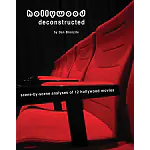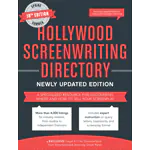Dan Bronzite’s Script Tips
Mixed Genres Can Lead to a Confusing Script
Writers get ideas for movies in various ways. Sometimes it’s overhearing a conversation on the bus, other times it may be a dream that inspires you to write a…
Good Screenwriting Means Being Original
Sometimes we, as people and writers, get lazy. It’s only natural. Life can be tough. Writing scripts can be hard. Please.. my heart bleeds. It’s time to take responsibility…
Pacing is Often the Key to a Successful Screenplay
To help you understand story pacing and how to write a script that keeps the reader turning the page it may help to think of your screenplay as a…
Humor in a Dark Place
The world we live in isn’t perfect and to be honest, although every day we all strive for perfection in one way or another, our lives would probably be…
Get Into Your Scene Late and Out Early
As a screenwriter it is important to remember that while the stories we tell should reflect real-life (or aspects of it) in order to engage an audience and help…
Don’t Have Too Many Characters
When you’re planning your screenplay make sure you only include the characters you need in order to tell your story. It may sound like an obvious statement but many…
Create Complex Characters that are not Black and White in Nature
How often in life do you meet someone that is flawless? Conversely, how often do you meet someone that does not have a single good bone in their body? …
Don’t Get Stuck on an Unresolved Plot Point
Writers’ Block — It’s a killer We’ve all been there, happily tapping away at the keyboard at our latest and greatest movie script in a creative stream of consciousness…
Character Arcs are the Foundation of an Engaging Story
So what is a character arc, you ask? Sounds complicated. Well, it doesn’t have to be, although a complicated character arc may be just what your screenplay needs. A…



